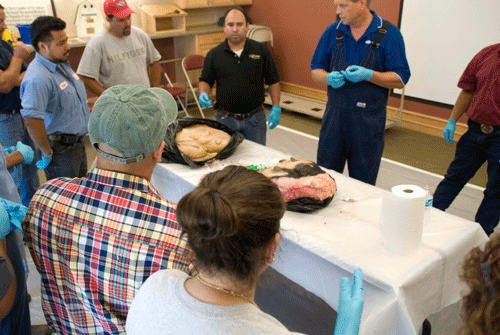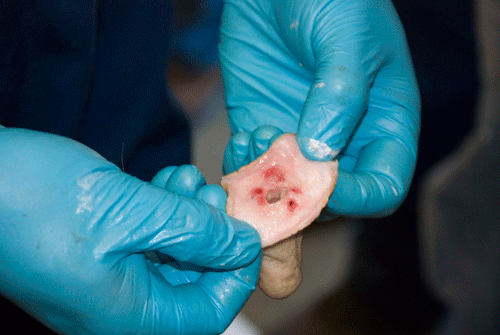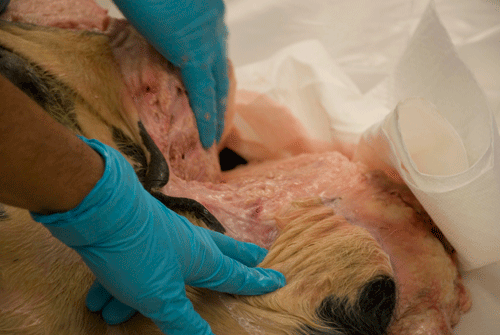The job of the milker to keep teats clean and dry to prevent infection is a daily battle on every farm; yet the task is simple in thought. Today at the Hoard's Dairyman Farm, a Hispanic milker training was held to relay that message in a way attendees could understand thoroughly. The event was organized by Vita Plus. Veterinarian Doug Braun of Pfizer shared with the group the basics of how and where milk is produced, the causes of mastitis, as well as proper procedures. Braun spoke in duo with a translator from Vi-Cor who relayed his entire message in Spanish.
Keeping teats clean was repeated over and over to the event's attendees. "It is so simple, but it isn't easy," Braun said. Using a white rubbing alcohol swab at the bottom of teats, Braun explained how easily dirt can accumulate on teats and get into the udder. "Bacteria isn't a runner, isn't a walker, but it is a great swimmer," he said regarding the ideal environment inside the udder for bacteria to grow and flourish once it has entered the teat. He also shared the importance of preparation to milking speed. "Just placing the milker on without prepping the teats can slow down milking by as much as 25 percent," said Braun.

The highlight of the meeting for many was likely the dissection of two udders. Braun sliced teats lengthwise to illustrate the size and thickness of teats and the streak canal. He also demonstrated how dry cow tubes should be administered. One common misconception that Braun shared with the group was the depth at which dry cow tubes should be inserted. While most tubes come with a roughly 1.5-inch end, it is only necessary to insert the tip of the tube roughly .25 inches into the teat to dispense the treatment.

After cutting the teat completely off, attendees could view just how many large blood vessels are directed towards the teat end. Then cutting into the udder tissue itself, we could see where milk-producing alveoli cells are found (see photo).

Keeping teats clean was repeated over and over to the event's attendees. "It is so simple, but it isn't easy," Braun said. Using a white rubbing alcohol swab at the bottom of teats, Braun explained how easily dirt can accumulate on teats and get into the udder. "Bacteria isn't a runner, isn't a walker, but it is a great swimmer," he said regarding the ideal environment inside the udder for bacteria to grow and flourish once it has entered the teat. He also shared the importance of preparation to milking speed. "Just placing the milker on without prepping the teats can slow down milking by as much as 25 percent," said Braun.

The highlight of the meeting for many was likely the dissection of two udders. Braun sliced teats lengthwise to illustrate the size and thickness of teats and the streak canal. He also demonstrated how dry cow tubes should be administered. One common misconception that Braun shared with the group was the depth at which dry cow tubes should be inserted. While most tubes come with a roughly 1.5-inch end, it is only necessary to insert the tip of the tube roughly .25 inches into the teat to dispense the treatment.

After cutting the teat completely off, attendees could view just how many large blood vessels are directed towards the teat end. Then cutting into the udder tissue itself, we could see where milk-producing alveoli cells are found (see photo).









